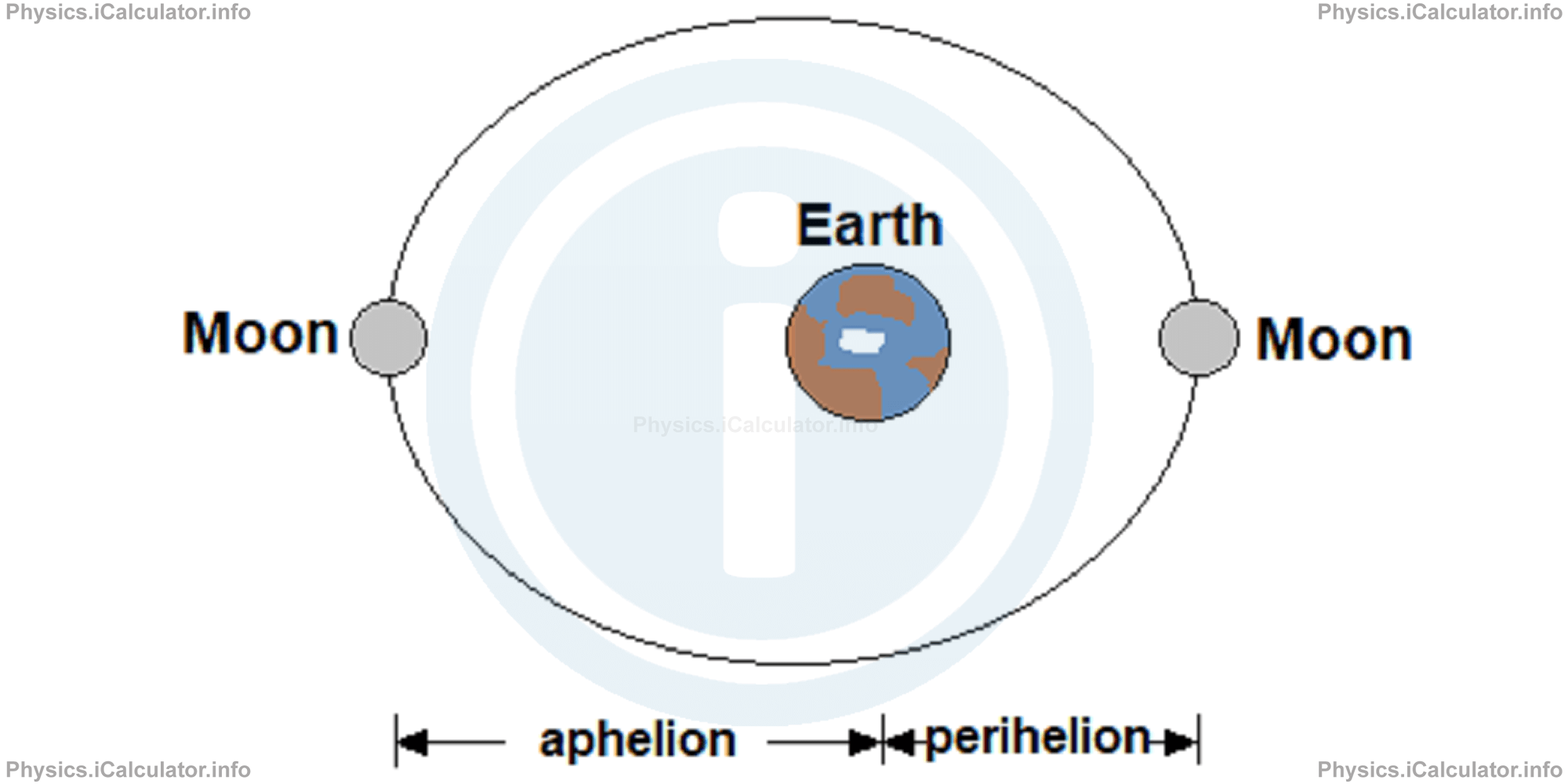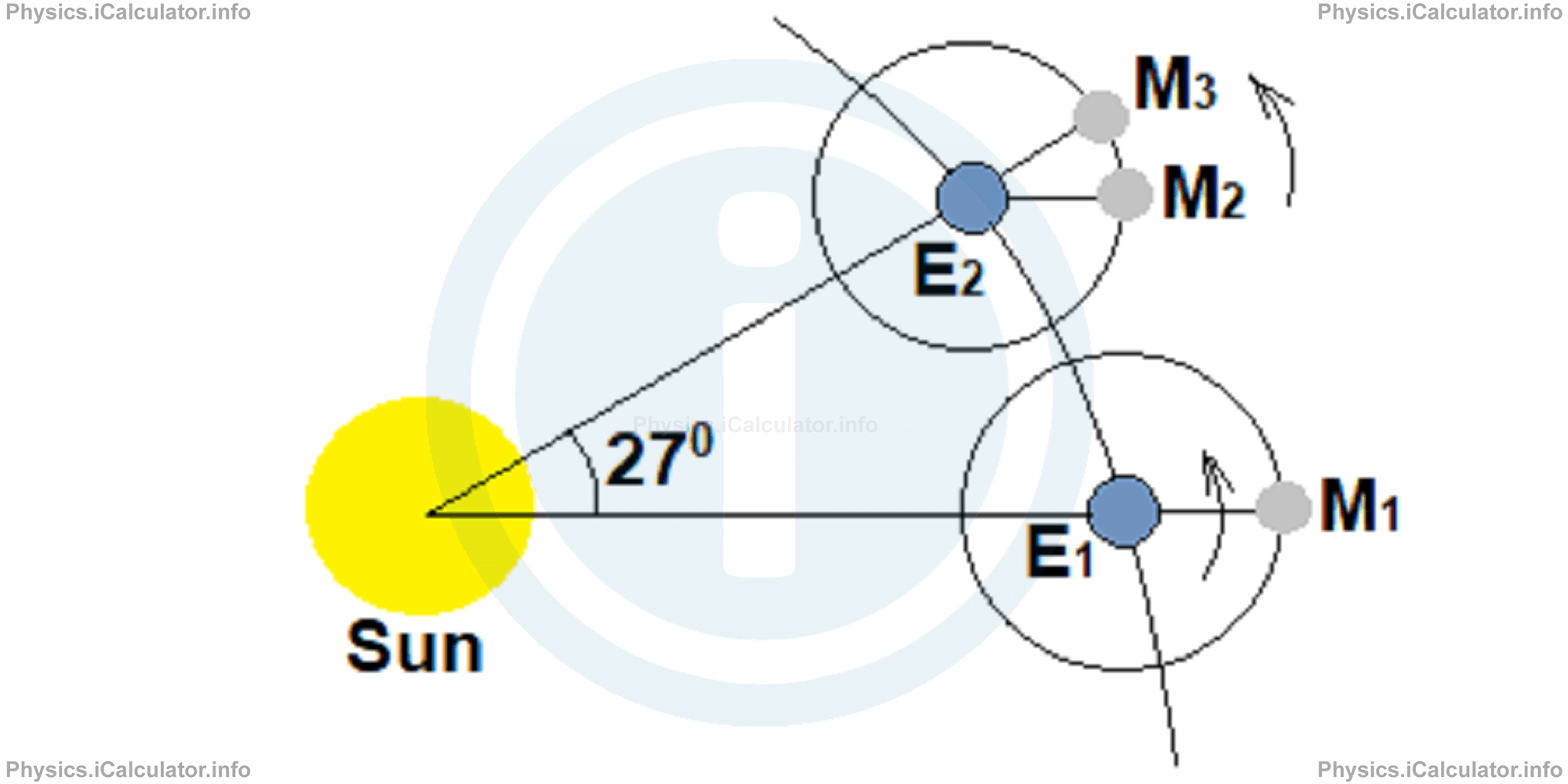Menu
Physics Lesson 22.3.1 - Main Features of the Moon's Movement
Please provide a rating, it takes seconds and helps us to keep this resource free for all to use
Welcome to our Physics lesson on Main Features of the Moon's Movement, this is the first lesson of our suite of physics lessons covering the topic of The Moon's Movement. Eclipses. Calendars, you can find links to the other lessons within this tutorial and access additional physics learning resources below this lesson.
Main Features of the Moon's Movement
The Moon also makes one complete cycle around the Earth in an elliptic-shape trajectory in a similar fashion to planetary motion around the Sun, where Earth is located in one of the ellipse foci. This cycle lasts for 27.32 days (a tropical month) when the (unmoveable) stars are taken as a reference frame and 29.53 days (a synodic month) when the Sun is taken as a reference frame. The successive new month begins when the Moon shows the same face it had in the previous month when viewed from Earth. This method for counting lunar months (i.e. to observe the same periodic view of the Moon) is used only when dealing with synodic month.
This difference in month duration is due to the Earth displacement around the Sun during the given period, similar to day duration difference in sidereal and tropical discussed in the previous tutorial (Earth day and solar day).
Aphelion (the longest distance) of Moon's orbit around the Earth is 407 000 km while perihelion (the shortest distance) is 356 000 km. This large difference indicates a long (and pressed) elliptic trajectory, more or less like this:

Now, let's explain why there is a difference of about two days between tropical month (27.32 days) and synodic month (29.53 days). The following figure is very helpful in explaining this point.

The Moon revolves around the Sun in the same direction as Earth does. Let's consider the initial position of Moon at M1 (Earth meanwhile is at E1). When the Moon completes one cycle in respect to remote (unmoveable) stars, it is in the position M2 (Earth is at E2). This process occurs in 27.32 days. During this time, the Earth rotates by 360°/12 = 30° (more accurate measurements give a value of 27°) around the Sun. However, in order to show the same view to the Earth, the Moon must be at M3. It takes about 2 days to the Moon to move from M2 to M3 and complete therefore the cycle of synodic month.
You have reached the end of Physics lesson 22.3.1 Main Features of the Moon's Movement. There are 5 lessons in this physics tutorial covering The Moon's Movement. Eclipses. Calendars, you can access all the lessons from this tutorial below.
More The Moon's Movement. Eclipses. Calendars Lessons and Learning Resources
Whats next?
Enjoy the "Main Features of the Moon's Movement" physics lesson? People who liked the "The Moon's Movement. Eclipses. Calendars lesson found the following resources useful:
- Features Feedback. Helps other - Leave a rating for this features (see below)
- Cosmology Physics tutorial: The Moon's Movement. Eclipses. Calendars. Read the The Moon's Movement. Eclipses. Calendars physics tutorial and build your physics knowledge of Cosmology
- Cosmology Revision Notes: The Moon's Movement. Eclipses. Calendars. Print the notes so you can revise the key points covered in the physics tutorial for The Moon's Movement. Eclipses. Calendars
- Cosmology Practice Questions: The Moon's Movement. Eclipses. Calendars. Test and improve your knowledge of The Moon's Movement. Eclipses. Calendars with example questins and answers
- Check your calculations for Cosmology questions with our excellent Cosmology calculators which contain full equations and calculations clearly displayed line by line. See the Cosmology Calculators by iCalculator™ below.
- Continuing learning cosmology - read our next physics tutorial: Stars
Help others Learning Physics just like you
Please provide a rating, it takes seconds and helps us to keep this resource free for all to use
We hope you found this Physics lesson "The Moon's Movement. Eclipses. Calendars" useful. If you did it would be great if you could spare the time to rate this physics lesson (simply click on the number of stars that match your assessment of this physics learning aide) and/or share on social media, this helps us identify popular tutorials and calculators and expand our free learning resources to support our users around the world have free access to expand their knowledge of physics and other disciplines.